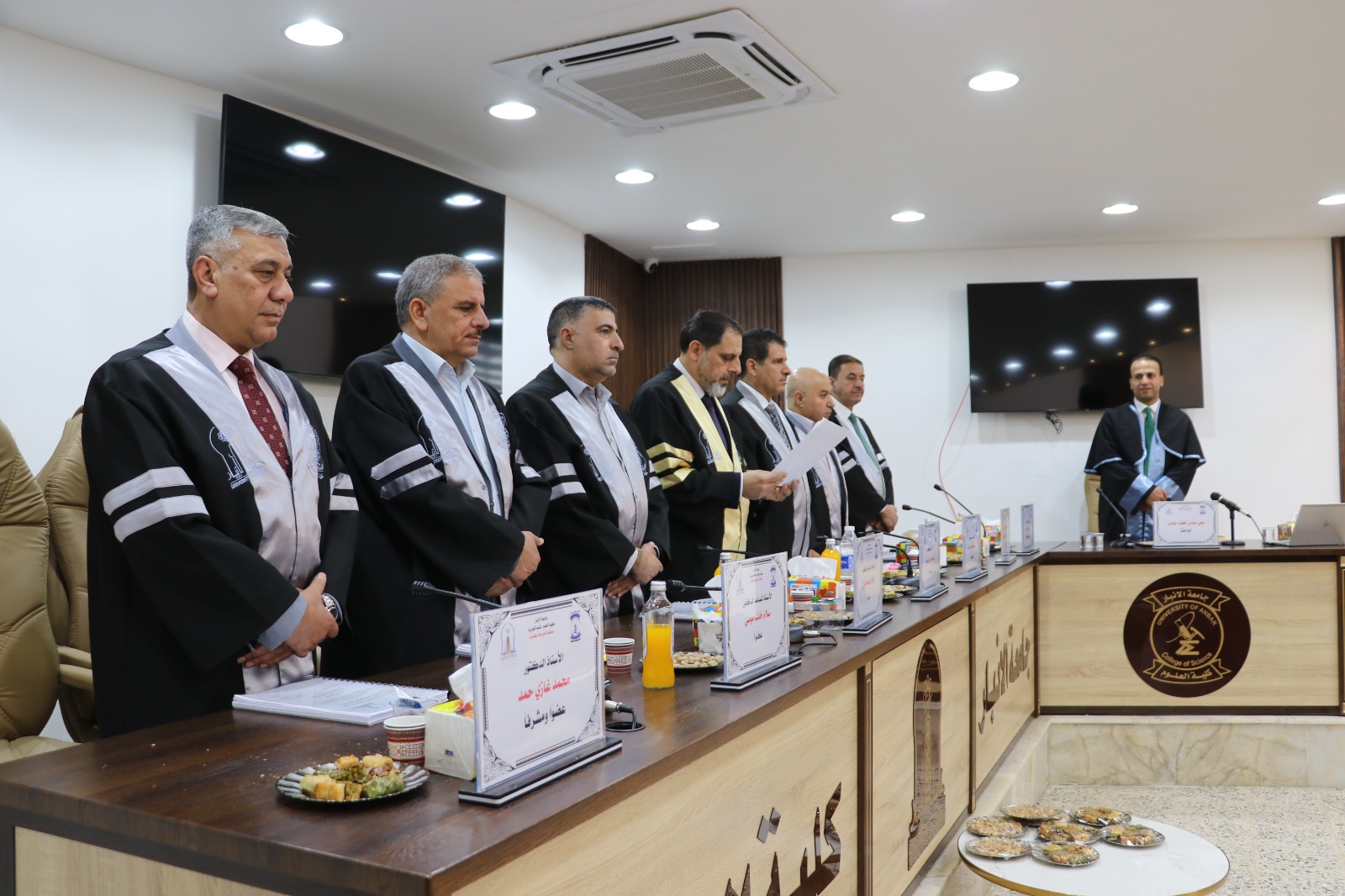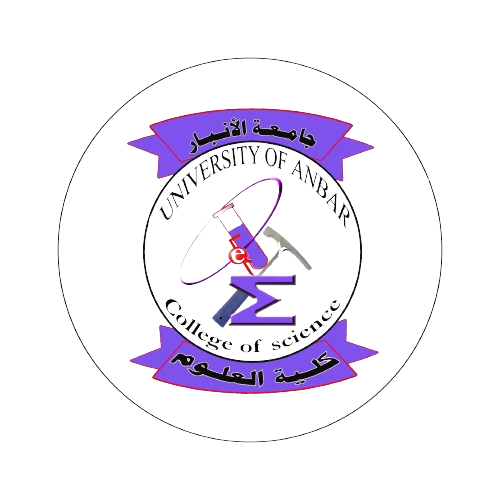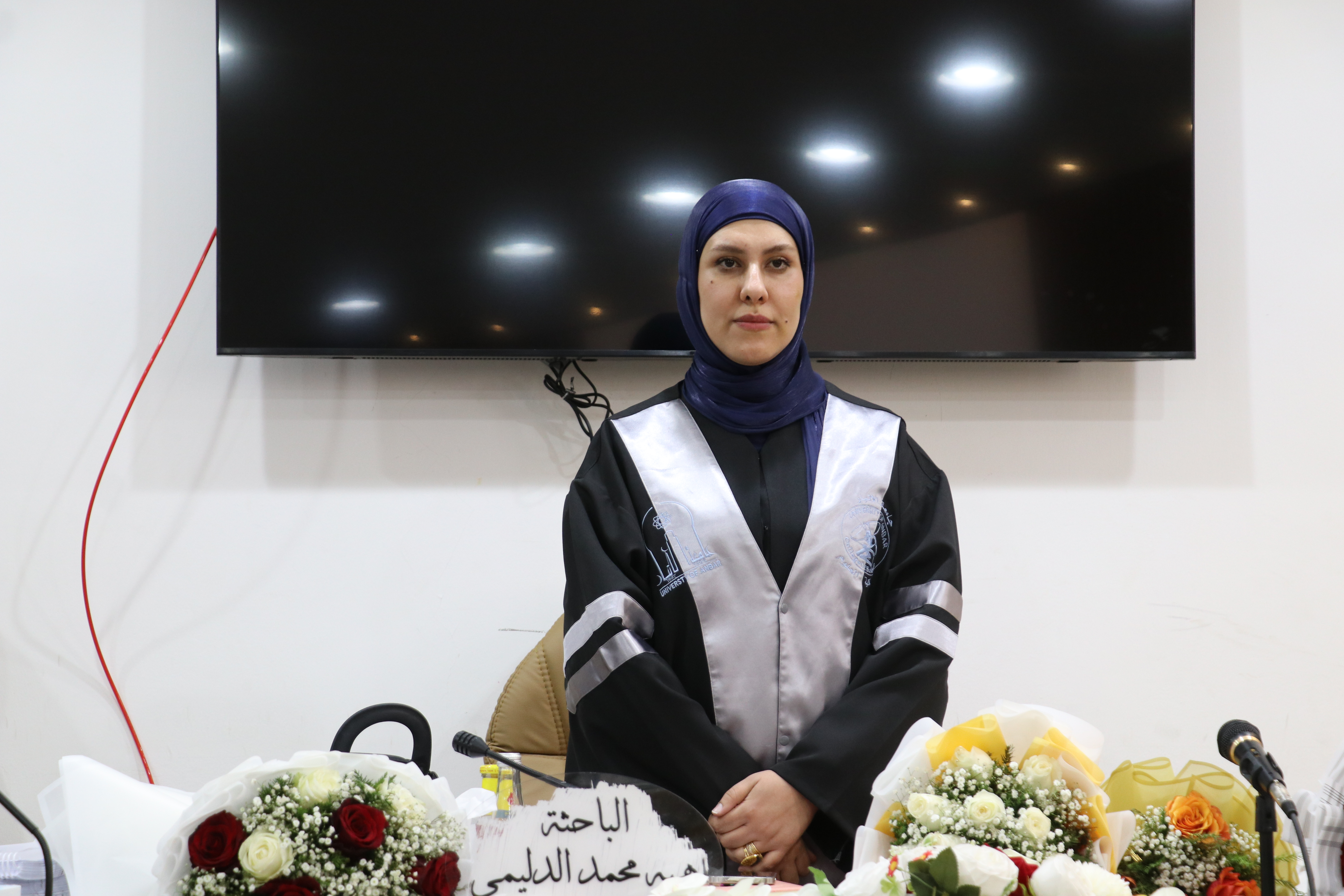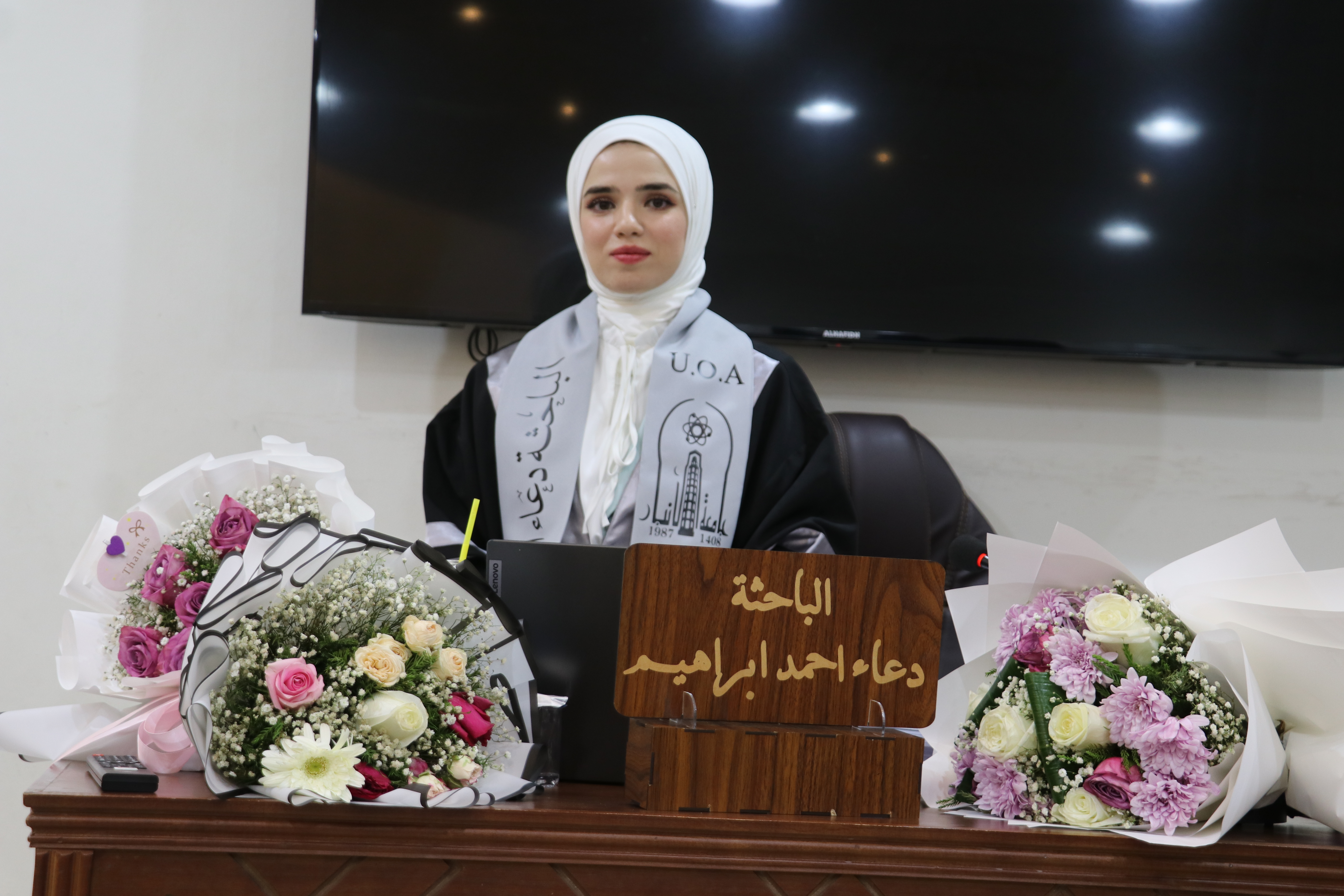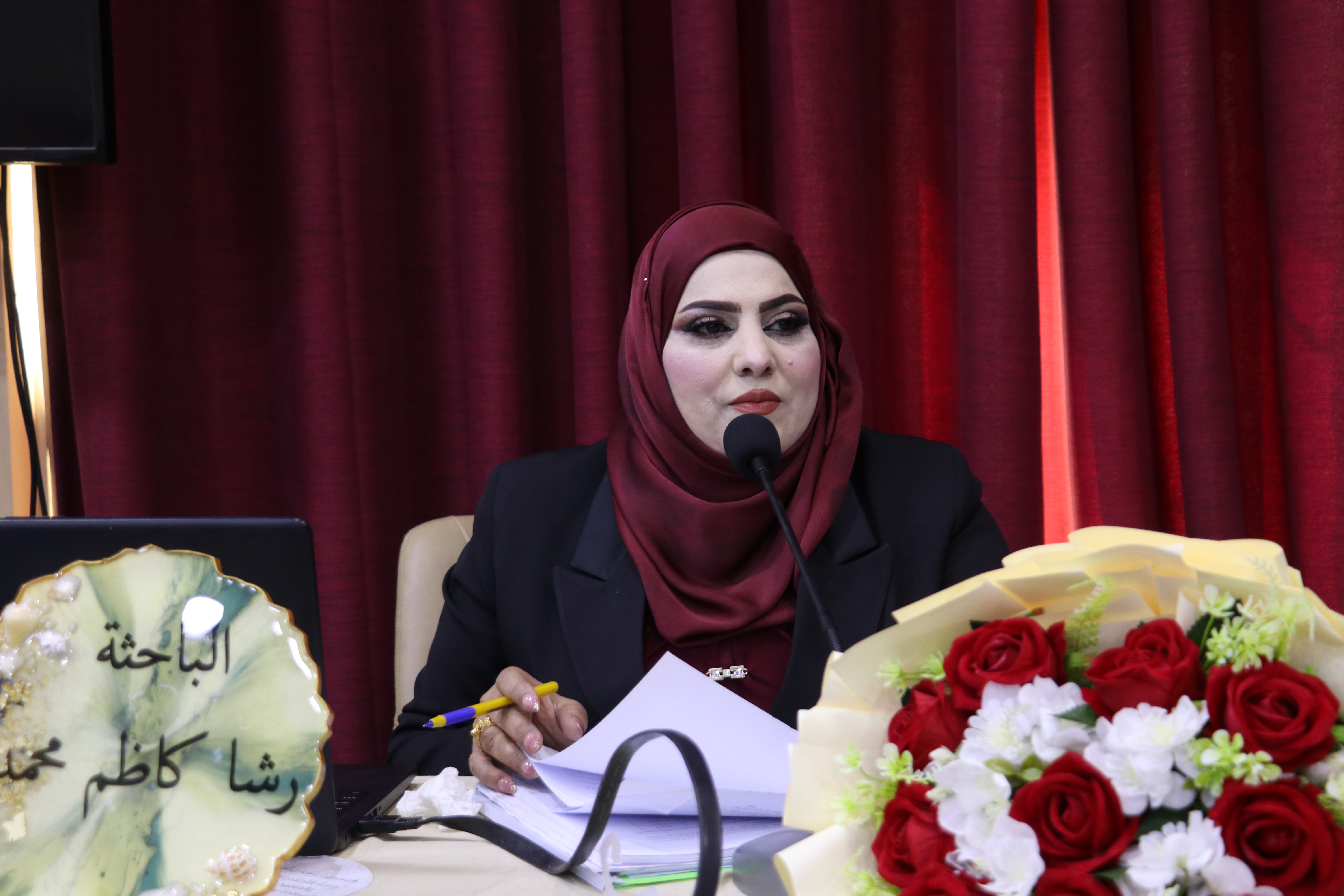Discussion of the dissertation of doctoral student " Ali Abbas Khdyar"
The public discussion took place for the Doctoral student (Ali Abbas Khdyar) at Anbar University, College of Science, Department of Physics, on Wednesday, 10, September 2025, in Ibn Sina Hall, for his tagged thesis
" Comparative study between Plasma Jet and Laser ablation techniques of Au, Ag/ZnO core-shell Nanoparticles for Biomedical Applications."
The discussion committee consisted of:
|
University of Anbar - College of Sciences - President |
Prof. Dr. Ahmed Salman Obaid |
|
University of Anbar - College of Pharmacy - Member |
Prof. Dr. Yousef Hindi Khalaf |
|
University of Anbar - College of Sciences - Member |
Assist. Prof. Dr. Alaa Ahmed Dayeh |
|
University of Baghdad - College of Education for Pure Sciences - Ibn Al-Haytham - Member |
Assist. Prof. Dr. Hatem Abdul Razzaq Taha |
|
University of Anbar - College of Education for Pure Sciences - member |
Assist. Prof. Dr. Salam Musa Khalaf |
|
University of Anbar - College of Sciences - Member and Supervisor |
Prof. Dr. Mohammed Ghazi Hamad |
|
University of Baghdad - College of Science for Women - Member and Supervisor |
Prof. Dr. Sabah Nouri Mazhar |
This study aimed to Synthesis and characterization of core-shell nanoparticles composed of gold as a core and zinc oxide as a shell, and silver as a core and zinc oxide as a shell, for potential therapeutic applications against skin cancer. Evaluation of the effects of two preparation techniques—pulsed laser ablation and plasma jetting—on the optical, electronic, and structural properties of the nanoparticles. Evaluation of the efficacy of the nanoparticles prepared using both techniques against skin cancer cells and comparison with normal cells.
The optical and electronic properties, morphology, surface roughness, and surface charge type —value of nanostructures is affected by changes in the preparation technique. Plasma jet technology reduces the exposure time required to produce nanoparticles by half, increasing the system's efficiency. The response of cancerous and normal cells changes depending on the properties of the nanostructures.
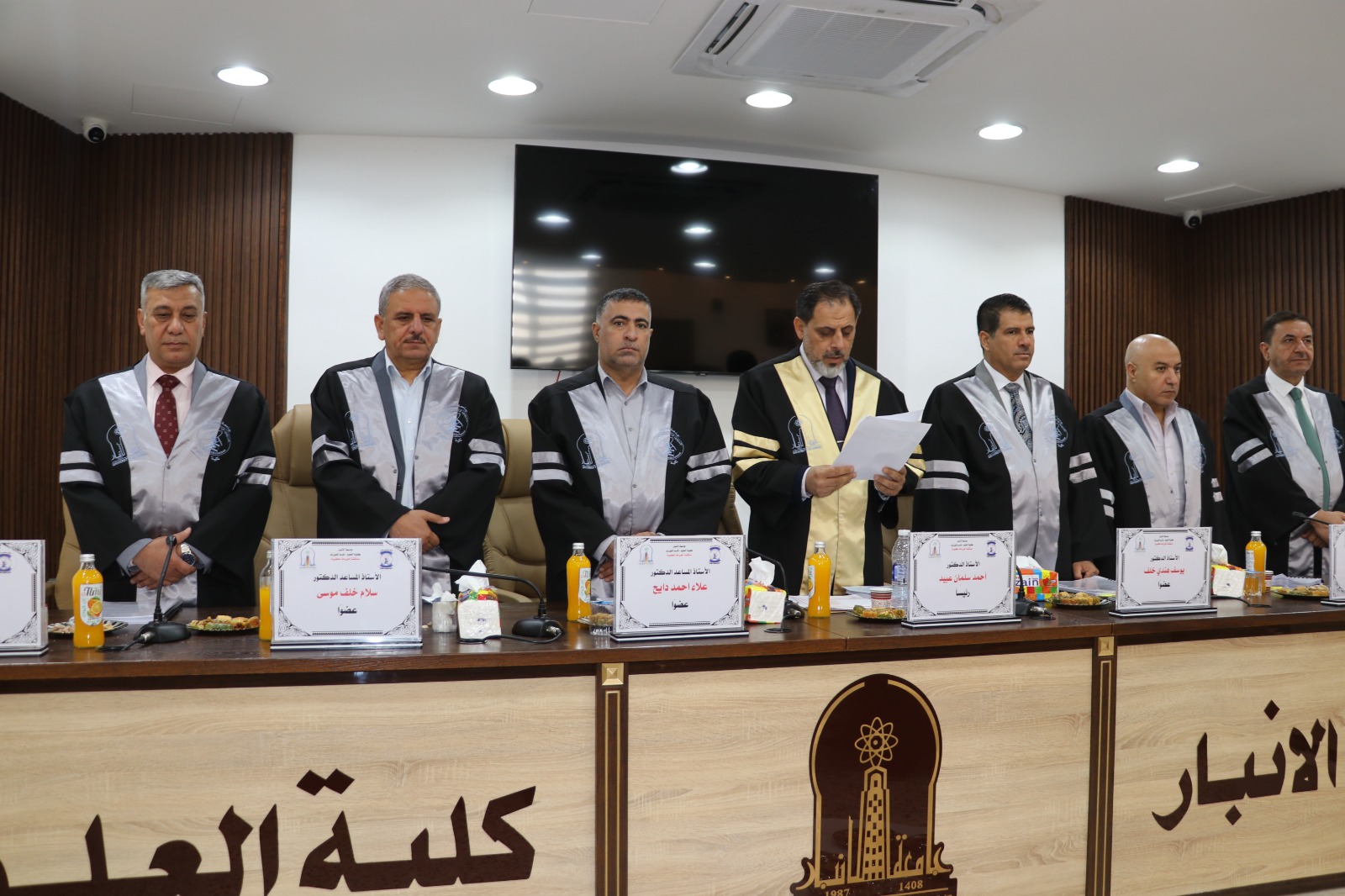
.jpeg)
.jpeg)
